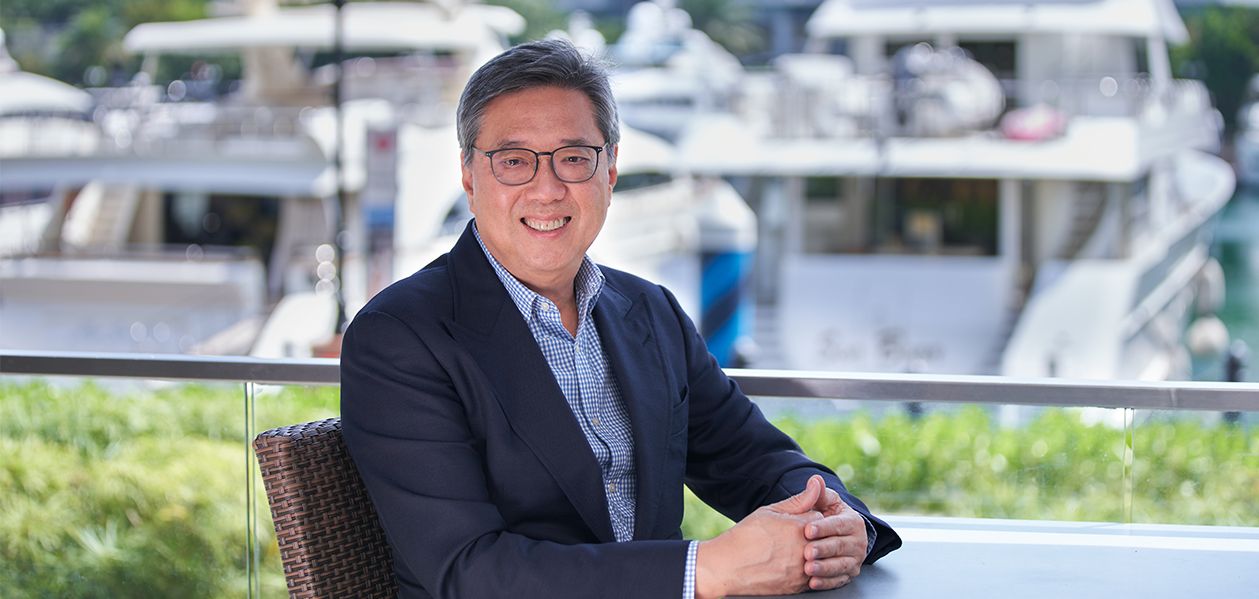In a rapid transition from traditional medical halls to numerous international outlets and an online store, embracing innovation has catapulted Eu Yan Sang into a household name in traditional Chinese medicine.
Dried plant roots, bitter herbal remedies and fine acupuncture needles might sound unappealing to some, but they remain highly sought-after hallmarks of traditional Chinese medicine (TCM). Practiced for centuries—tracing back to the third century BCE—TCM has now entered the realm of modern research and development with extensive studies and trials. Drawing on both a rich history and scientific evidence, TCM is a popular option across Asia for consumers looking to maintain a healthy lifestyle.
In the TCM arena, Eu Yan Sang has established itself as a reputable and trusted provider of quality remedies and recipes. From a small, homegrown business to a publicly listed company with global ambitions, the Perak-born establishment has a secret ingredient to its success—innovation. With a rich heritage of 143 years, now Singapore-headquartered Eu Yan Sang has churned out products ranging from dietary supplements and health foods to packaged tonic soups and personal-care items—delivering accessible and quality TCM to its customers.
Chairman of Eu Yan Sang International, Richard Eu, shares with IPI how constant innovation helped transform the brand into a household name.
1. As a company with a long and rich history, what was the turning point that led to Eu Yan Sang pursuing open innovation?
Imagine walking into a TCM store in the 1990s—an old, dusty, dark medical hall with huge drawers at the back. You’ll see herbs lowered to the first floor using baskets. A pneumatic tube system is used to deliver change to the cashier. Herbal medicines are handmade in basements and dried on rooftops.
That’s how we operated for a very long time until we figured that change was long overdue. We decided to revamp and rejuvenate business operations—from warehouse management to product packaging and customer experience.
Much work had to be done to make the company relevant for the modern-day consumer. From that angle, we pursued open innovation to make Eu Yan Sang better.
2. How did innovation help Eu Yan Sang grow and how can it help others in the complementary health products industry?
Innovation is not just about bringing in novel technology. There are also many other aspects when it comes to innovation—especially in a very traditional industry like TCM.
We aimed for quality, consistency, and credibility. Back in the day, it wasn’t a requirement to adhere to quality standards when it came to manufacturing medicines. However, we took the initiative to adopt Australia’s Therapeutic Goods Administration (TGA) standard—one of the strictest in the world during that time—until the Goods Manufacturing Practice became widespread. By putting quality first and foremost, we built our customers’ confidence that our products are consistent and credible.
To carry out research that went far beyond basic product innovations, we collaborated with various universities like the Hong Kong Baptist University, The Chinese University of Hong Kong, the National University of Singapore, and Universiti Tunku Abdul Rahman in Malaysia, among others. One of our famous innovations, Bak Foong pills, transforms traditional herbal soups that are time-consuming to prepare into highly efficacious powdered capsules—making wellness more convenient for consumers.
It’s always crucial to approach innovation from the perspective of the customers. First, you need to carry out consumer research to learn what are the gaps in the current market. Next, you fill in the gap with scientific research to spark innovation.
3. Can you tell us more about the One Wellness clinic? Are there any other similar innovation projects currently in the works?
In the early 2000s, we decided to establish clinics of our own that integrate Eastern and Western aspects of medicine and healthcare to provide the best patient outcomes possible.
Called One Wellness Medical, these clinics are designed for and around our patients, employing a holistic and inclusive approach to primary care. Under one roof, patients have the option to choose from TCM, acupuncture or chiropractic services, with the goal of providing treatment that is best suited for them.
Some of our ongoing innovation activities cannot be mentioned, but we are currently dabbling in digital modelling to see how well we can optimise the quality, safety, efficacy, and dosage of some of our products.
4. Can you share some examples of how such innovation efforts have benefitted the business?
Out of our top 10 best-selling products, most of them are recent innovations. For instance, while wild cordyceps have potent anti-inflammatory and antioxidant effects, they are extremely rare. We successfully synthesised a strain of cordyceps, called Hirsutella Sinesis, that is genetically identical to its wild counterpart. That way, customers can enjoy, affordable and commercially available cordyceps supplements to boost their well-being.
We always remind ourselves not to ignore the old, but to constantly layer new ideas to refresh and improve upon classic recipes.
5. Do you have any advice for other companies in the industry looking to begin their innovation journey?
Don’t be shy—come and talk to us and we can help! If you’re a start-up, there will invariably be some constraints. For example, you’ll need to identify what your niche is and how can that fill the gaps in the consumer market.
Bear in mind that the whole process of design thinking is crucial to facilitate innovation and always be on the lookout for fresh ideas that could benefit your business.

